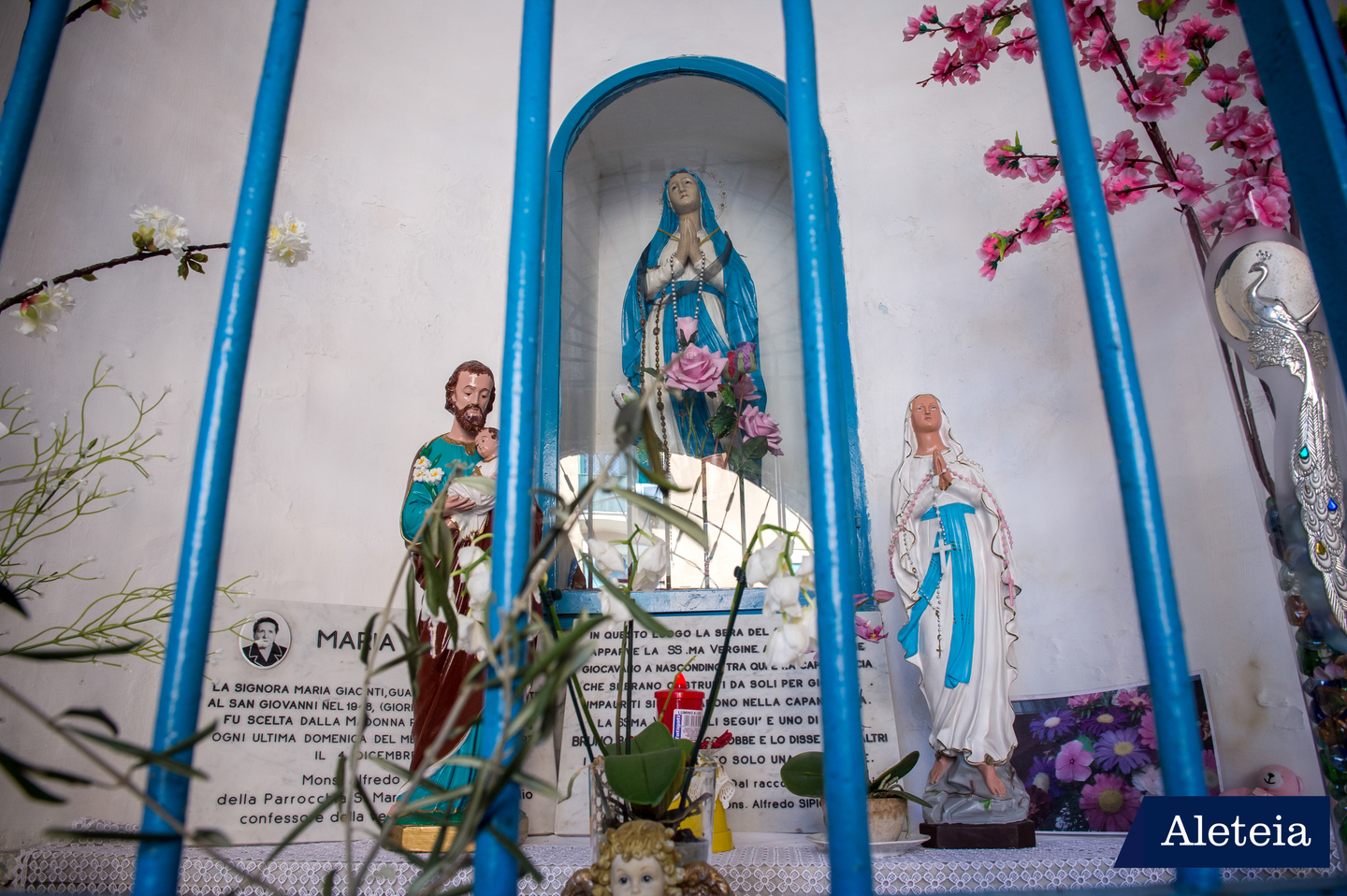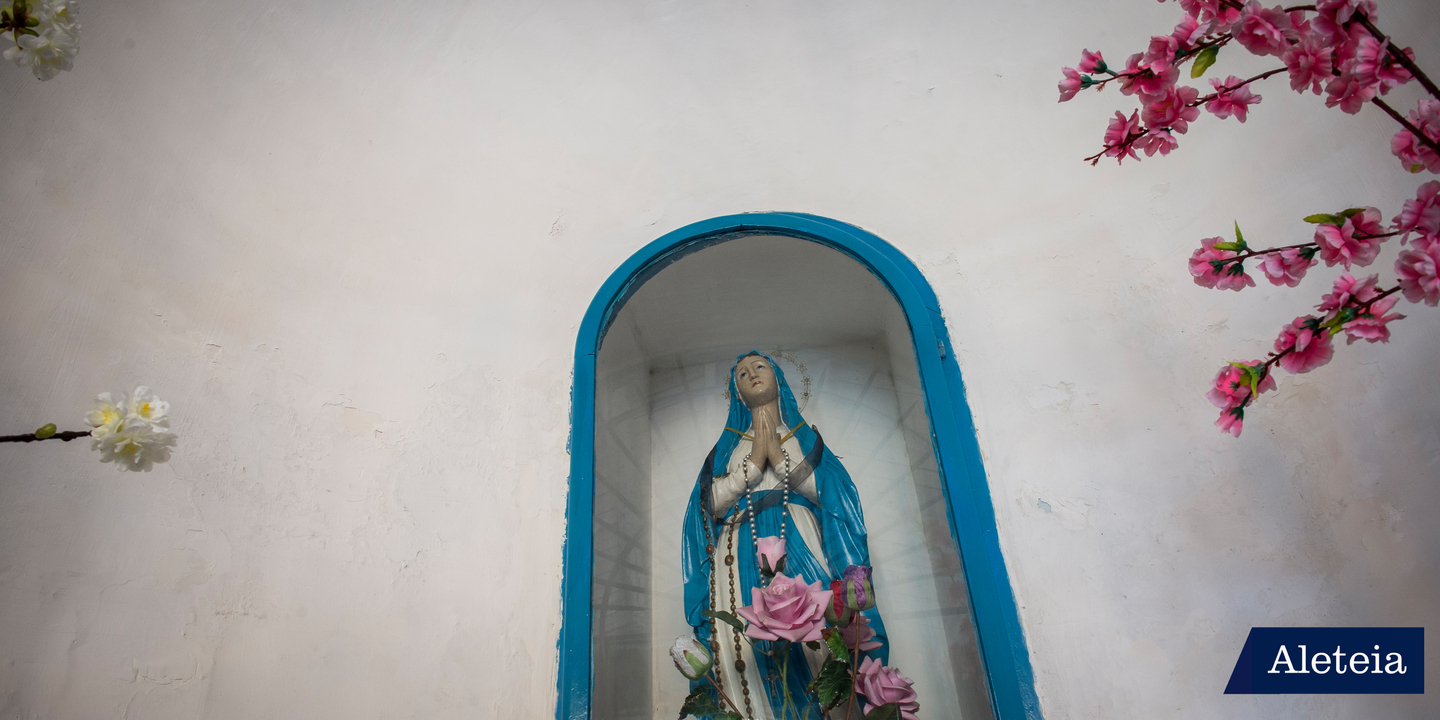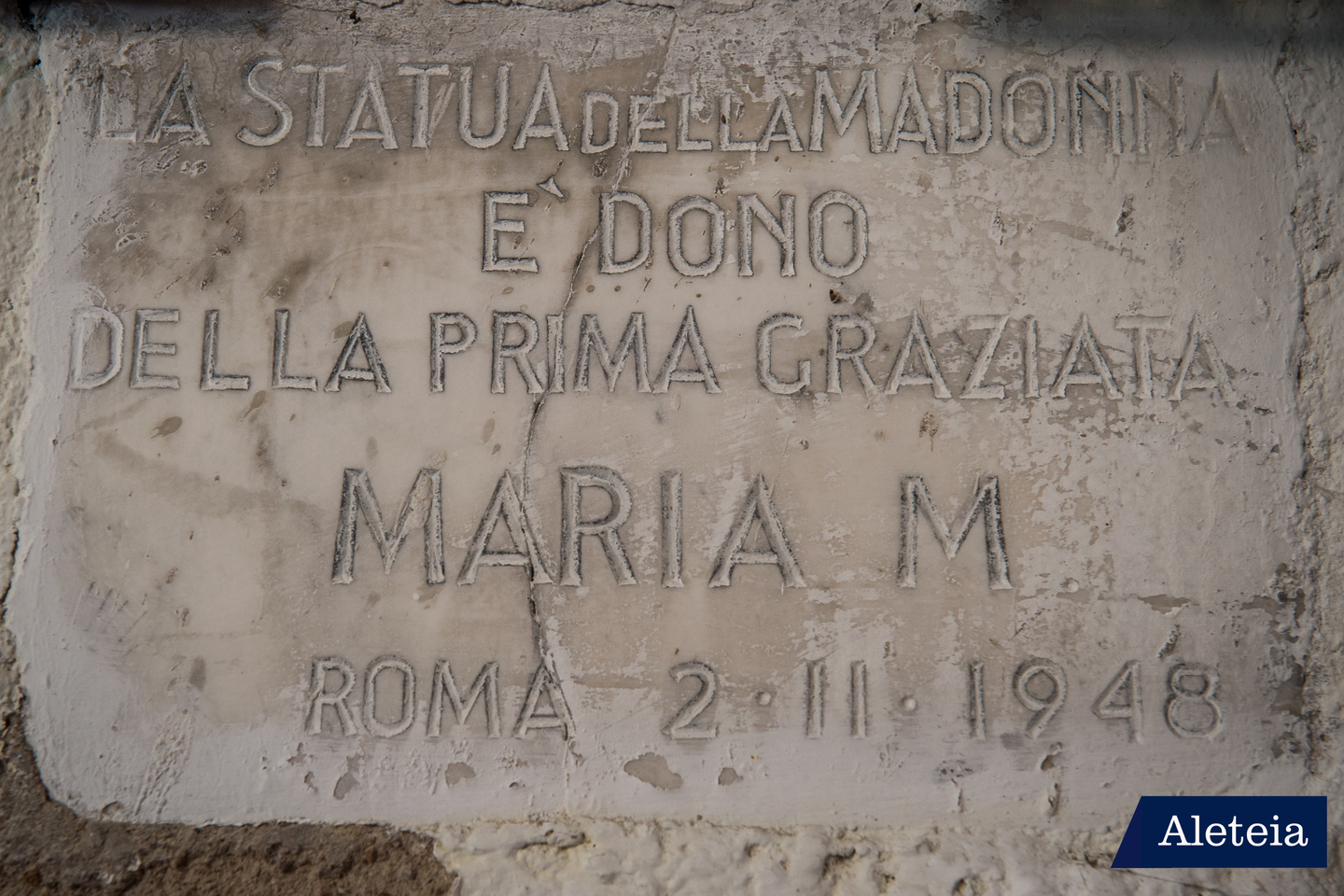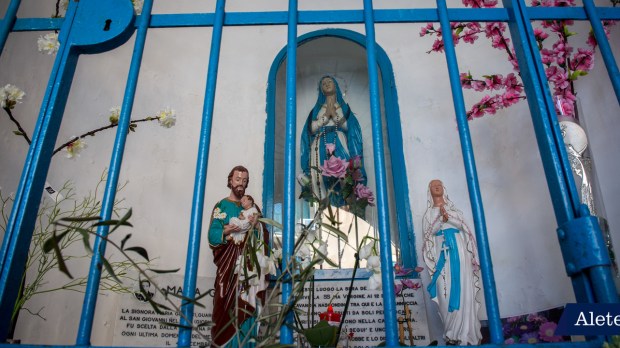We continue with our daily tour this month through a particular artistic expression of Marian devotion: Rome’s “Madonnelle” (“little Madonnas”). These are images of Mary—some of them miraculous—scattered throughout the streets and alleyways of the city. They are the object of much popular devotion. Follow the series here: Little Madonnas of Rome
Madonna of the Shack: Viale dell’Acquedotto Alessandrino

Is Rome like Fatima? At the end of the 1940s, the Virgin Mary appeared to a group of playing children. Specifically, it happened on May 17, 1948, as you can read on a marble plaque located inside the chapel built on the spot of the apparition, in the Torpignattara quarter of Rome, behind the arches of the Aqua Alexandrina (an ancient Roman aqueduct, a piece of which is incorporated into the rear wall of the chapel).
“In this place, on the evening of May 17, 1948, the Most Holy Virgin appeared to 12 children who were playing hide-and-seek between this spot and the little shack they had made for themselves as a playhouse. They were afraid, and took refuge in the shack. The Most Holy Virgin followed them, and one of the children, Bruno Bolotti, recognized her and told the others, who had only seen a great light.”

Hence, the name with which this little Madonna is known: “Madonna della Capannuccia” (Madonna of the Shack.) By day, the door is always open, so that whoever passes by can enter and greet the “woman of the house.” The statue of the Madonna is guarded in a niche protected by a blue grate. In front of the Madonna, there is a little stand for votive candles. All around the room there are chairs against the wall, kept here for those who come to pray. A group of the faithful also organize the recitation of the Rosary, at least during the month of May. Little statues, rosaries, photographs, cards, and images of the pope and of saints are hung everywhere.
The Virgin—dressed in white and wearing a blue mantle—is in an attitude of prayer, with her hands joined; a rosary hangs from them, and another at her side. These rosaries are probably “ex voto” [tokens of gratitude for favors received], like so many other items that from early on covered the “grotto” and all the walls of the chapel.

A plaque reads, “This statue of the Madonna is a gift from the first person to receive a special grace, Maria M., November 2, 1948.”
There are dozens of ex voto “for favors received,” mostly dating from the 1940s. Many of these speak of miraculous healings attributed to the intercession of the Madonna; on others is engraved for posterity the amount of money donated by devotees for the enlarging of this “shrine,” a way of repaying a debt because of a favor received.
~
Follow the series here: Little Madonnas of Rome
See more articles like this at Aleteia’s Art & Travel section.

